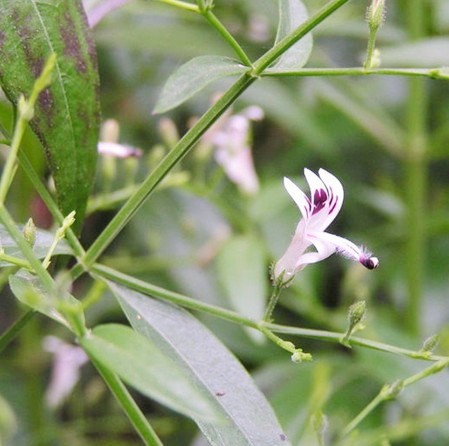SPECIFICATION
English names: Creat, kariyat.
Description: Erect annual herb, 0.4-1m. high. Stems quadrangular, much-branched. Leaves opposite, short-petioled, oblong-attenuate at both ends, glabrous, pale beneath. Inflorescence in few-flowered axillary and terminal raceme or panicle; flowers white with pink spots. Capsule linear-oblong, acute at both ends, pubescent. Seeds numerous, oblong, glabrous.
Flowering period: September - January.
Distribution: Species cultivated everywhere, especially in the south.
Parts used: The whole plants, especially the leaves, are collected in summer and sun-dried or heat-dried.
Chemical composition: The plant contains bitter glucosides: andrographolide, neoandrographolide, panaculoside, flavonoids, andrographin, panicalin, apigenin 7-4 - dimethyl ether.
Therapeutic uses: The whole plants, principally the leaves, possess antibacterial, anti-inflammatory and immunosuppressive properties. The leaves are used in treating dysentery, diarrhoea, enteritis, fever, coryza, cough, sore throat, tonsillitis, bronchitis, osteodynia, arthralgia, menstrual and post-partum haematometra, scrofula, hypertension and snake-bite.
10 to 20g of dried plant in the form of a decoction or 2 to 4g of dried leaves in the form of a powder or pills are administered daily. They are also used in a poultice for phlegmon and snake-bite.

